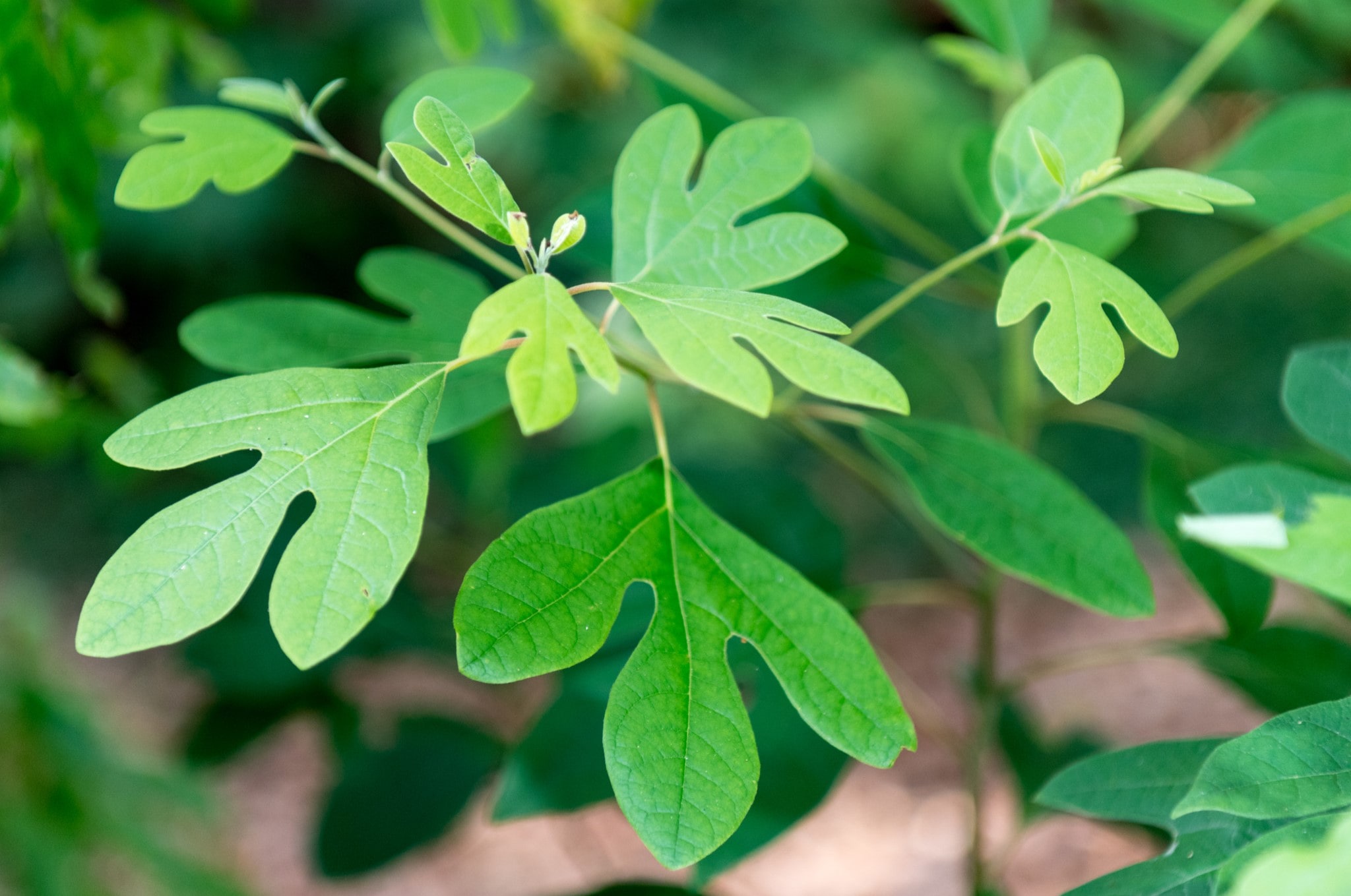
Sassafras leaves are more than just a pretty addition to the forest floor. These unique leaves have a rich history and a variety of uses that might surprise you. Did you know that sassafras leaves were once a key ingredient in root beer? Or that they have been used in traditional medicine for centuries? From their distinctive shape to their aromatic qualities, sassafras leaves are a fascinating subject worth exploring. In this post, we’ll uncover 15 intriguing facts about these versatile leaves, shedding light on their botanical characteristics, historical significance, and modern-day applications. Ready to learn more about the wonders of sassafras leaves? Let’s dive in!
Key Takeaways:
- Sassafras leaves have three unique shapes and a pleasant aroma when crushed. They are used in cooking and have a rich history in Native American medicine and early European trade.
- While sassafras leaves offer health benefits like antioxidants and anti-inflammatory properties, they also contain safrole, a compound with carcinogenic effects. They play a crucial ecological role and have fun facts like vibrant fall foliage and crafting uses.
What Are Sassafras Leaves?
Sassafras leaves come from the sassafras tree, native to North America. These leaves have been used for centuries in cooking, medicine, and even crafting. Let's dive into some fascinating facts about these unique leaves.
-
Three Leaf Shapes: Sassafras leaves are unique because they come in three different shapes on the same tree. You can find oval, mitten-shaped, and three-lobed leaves all growing together.
-
Aromatic Leaves: When crushed, sassafras leaves release a pleasant, spicy aroma. This scent is due to the essential oils present in the leaves.
-
Culinary Uses: In the culinary world, sassafras leaves are famous for being a key ingredient in filé powder, used in Creole and Cajun cooking, especially in gumbo.
Historical Significance of Sassafras Leaves
Sassafras leaves have a rich history, especially among Native American tribes and early European settlers. They were used for various purposes, from food to medicine.
-
Native American Medicine: Native American tribes used sassafras leaves for medicinal purposes, such as treating wounds, colds, and fevers.
-
Early Export: Sassafras was one of the first exports from North America to Europe. In the 16th century, it was highly valued for its supposed medicinal properties.
-
Colonial Beverage: Early American colonists used sassafras leaves to brew a tea-like beverage, believed to have health benefits.
Health Benefits and Risks
Sassafras leaves have been touted for their health benefits, but they also come with some risks. It's important to understand both sides.
-
Antioxidant Properties: Sassafras leaves contain antioxidants, which help protect cells from damage caused by free radicals.
-
Anti-inflammatory Effects: The leaves have anti-inflammatory properties, making them useful in traditional medicine for reducing swelling and pain.
-
Safrole Concerns: Sassafras leaves contain safrole, a compound that has been found to be carcinogenic in large amounts. Because of this, the FDA has banned its use in commercially prepared foods and drugs.
Ecological Role of Sassafras Trees
Sassafras trees, and their leaves, play an important role in their ecosystems. They provide food and habitat for various species.
-
Wildlife Food Source: The leaves and twigs of sassafras trees are a food source for deer, rabbits, and other herbivores.
-
Butterfly Host Plant: Sassafras trees serve as host plants for the spicebush swallowtail butterfly. The larvae feed on the leaves, which are crucial for their development.
-
Soil Improvement: Sassafras trees help improve soil quality by adding organic matter through their fallen leaves, which decompose and enrich the soil.
Fun and Interesting Facts
Beyond their practical uses, sassafras leaves have some fun and quirky facts that make them even more interesting.
-
Colorful Fall Foliage: In the fall, sassafras leaves turn vibrant shades of yellow, orange, and red, making them a beautiful addition to any landscape.
-
Root Beer Flavor: Sassafras roots were traditionally used to flavor root beer. However, due to safrole concerns, this practice has largely been discontinued.
-
Crafting Uses: Sassafras leaves can be used in crafting, such as making natural dyes or adding texture to handmade paper.
Sassafras Leaves: Nature's Hidden Gem
Sassafras leaves, with their unique mitten shape and aromatic qualities, offer more than just visual appeal. Historically, they've been used in traditional medicine, cooking, and even as a natural insect repellent. Their distinct flavor has made them a staple in Creole cuisine, especially in gumbo. Beyond culinary uses, sassafras leaves have been studied for potential health benefits, including anti-inflammatory properties. However, it's essential to note that safrole, a compound found in sassafras oil, has been linked to health risks, leading to its regulation in food products. Despite this, the leaves themselves, when used correctly, remain a fascinating and versatile part of nature's bounty. Whether you're a history buff, a culinary enthusiast, or just curious about plants, sassafras leaves offer a rich tapestry of uses and stories. Dive into their world, and you might just find a new favorite herb.
Frequently Asked Questions
Was this page helpful?
Our commitment to delivering trustworthy and engaging content is at the heart of what we do. Each fact on our site is contributed by real users like you, bringing a wealth of diverse insights and information. To ensure the highest standards of accuracy and reliability, our dedicated editors meticulously review each submission. This process guarantees that the facts we share are not only fascinating but also credible. Trust in our commitment to quality and authenticity as you explore and learn with us.


